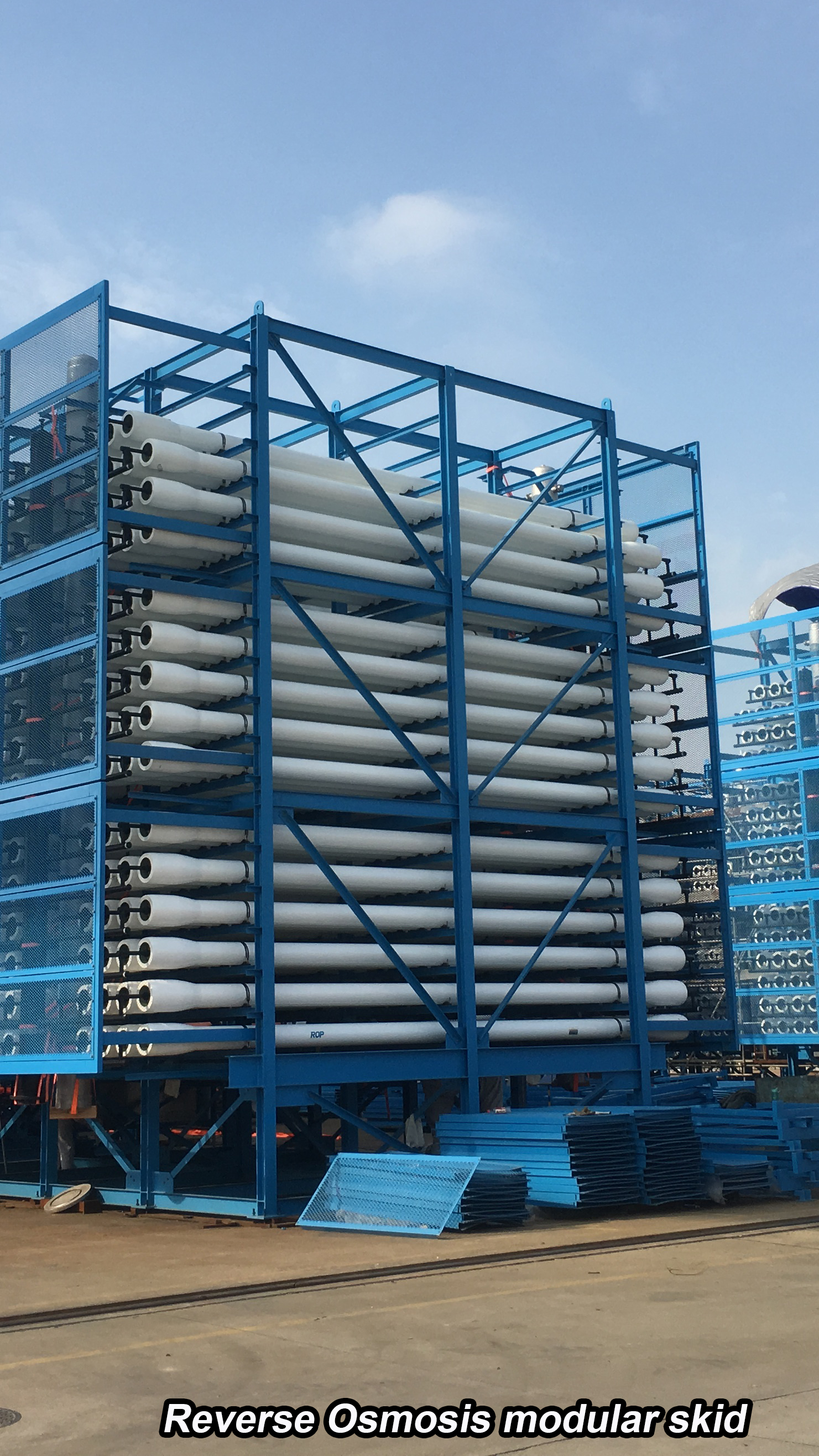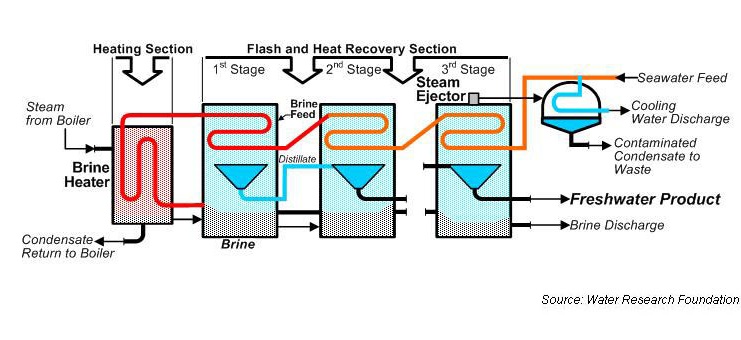
Desalination removes dissolved salts and impurities from seawater and turns it into fresh, drinking quality water.
MEMBRANE DESALINATION
Reverse Osmosis (RO) Principle
- The process starts with equal volumes of fresh water and saline water.
- Natural Osmosis: A natural phenomenon where fresh water migrates from higher water potential (the fresh water side) to lower water potential (the brine water side) through the semi permeable membrane.
- Osmotic Equilibrium: As fresh water passes through the semi-permeable membrane, the levels of the two solutions become unequal resulting in different pressure. The difference in pressure eventually brings migration to a stop. This pressure is called osmotic pressure.
- Reverse Osmosis: A process of applying excessive pressure to force water from the brine water through a semi-permeable membrane to the fresh water side (Desalination).

THERMAL DESALINATION
Thermal methods use heat to distill water while recapturing heat from vapour condensation. Thermal desalination mainly consists of 3 types, namely 1) Multi-Stage Flash (MSF), 2) Vapour Compression (VC) and 3) Multiple Effect Distillation (MED). MSF is the most commonly used in desalination technology out of the three.
Multi-Stage Flash (MSF) Principle
Seawater is heated and evaporated, and the steam is condensed to produce desalinated water. The evaporation and condensation is split into many stages that are repeated several times, increasing overall efficiency. MSF is an energy intensive process, but it can produce large amount of water at any one time and therefore is almost exclusively used in Arabian Gulf region where fuel cost is relatively lower.




